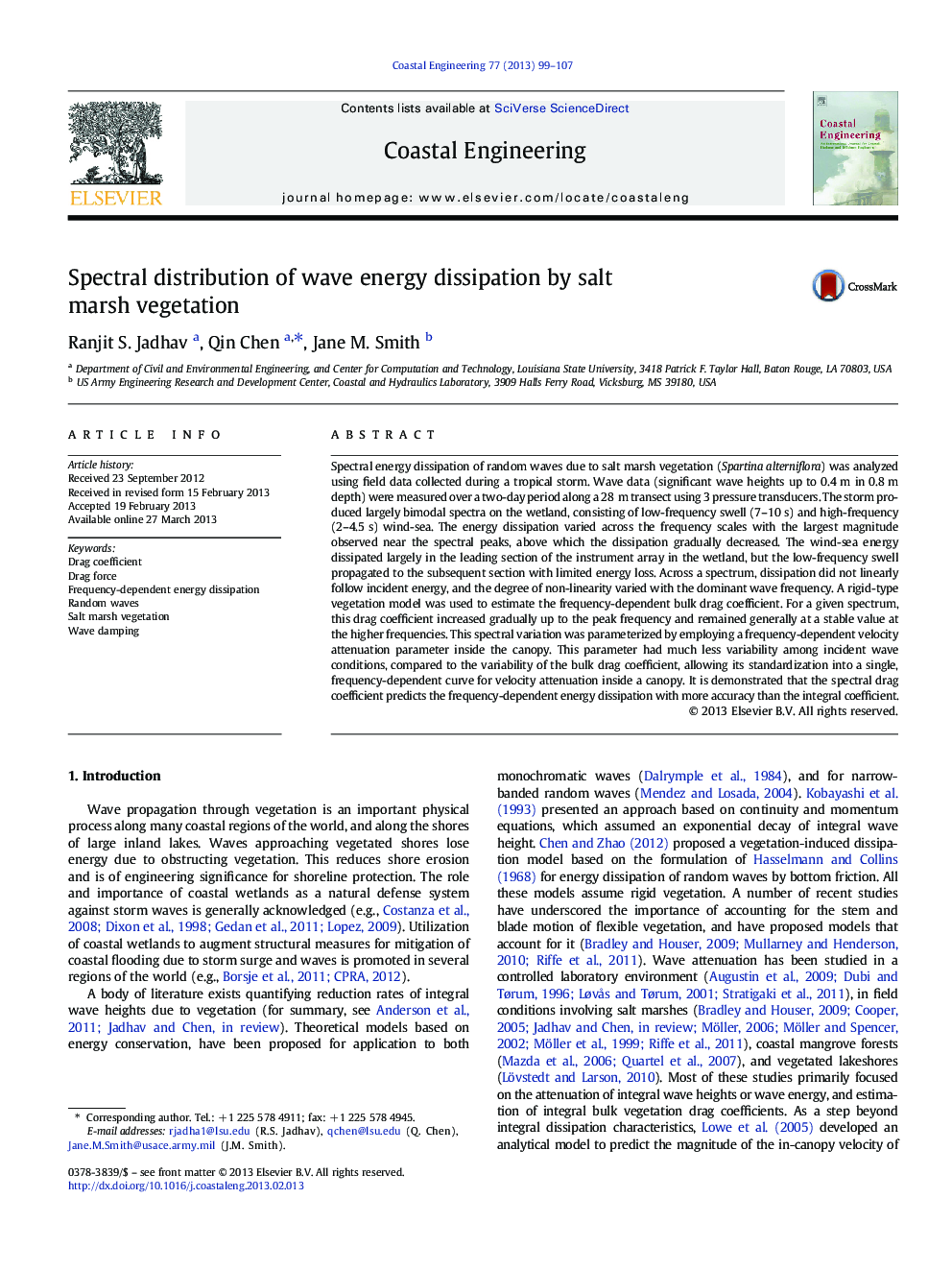| Article ID | Journal | Published Year | Pages | File Type |
|---|---|---|---|---|
| 8059956 | Coastal Engineering | 2013 | 9 Pages |
Abstract
Spectral energy dissipation of random waves due to salt marsh vegetation (Spartina alterniflora) was analyzed using field data collected during a tropical storm. Wave data (significant wave heights up to 0.4Â m in 0.8Â m depth) were measured over a two-day period along a 28Â m transect using 3 pressure transducers. The storm produced largely bimodal spectra on the wetland, consisting of low-frequency swell (7-10Â s) and high-frequency (2-4.5Â s) wind-sea. The energy dissipation varied across the frequency scales with the largest magnitude observed near the spectral peaks, above which the dissipation gradually decreased. The wind-sea energy dissipated largely in the leading section of the instrument array in the wetland, but the low-frequency swell propagated to the subsequent section with limited energy loss. Across a spectrum, dissipation did not linearly follow incident energy, and the degree of non-linearity varied with the dominant wave frequency. A rigid-type vegetation model was used to estimate the frequency-dependent bulk drag coefficient. For a given spectrum, this drag coefficient increased gradually up to the peak frequency and remained generally at a stable value at the higher frequencies. This spectral variation was parameterized by employing a frequency-dependent velocity attenuation parameter inside the canopy. This parameter had much less variability among incident wave conditions, compared to the variability of the bulk drag coefficient, allowing its standardization into a single, frequency-dependent curve for velocity attenuation inside a canopy. It is demonstrated that the spectral drag coefficient predicts the frequency-dependent energy dissipation with more accuracy than the integral coefficient.
Related Topics
Physical Sciences and Engineering
Engineering
Ocean Engineering
Authors
Ranjit S. Jadhav, Qin Chen, Jane M. Smith,
